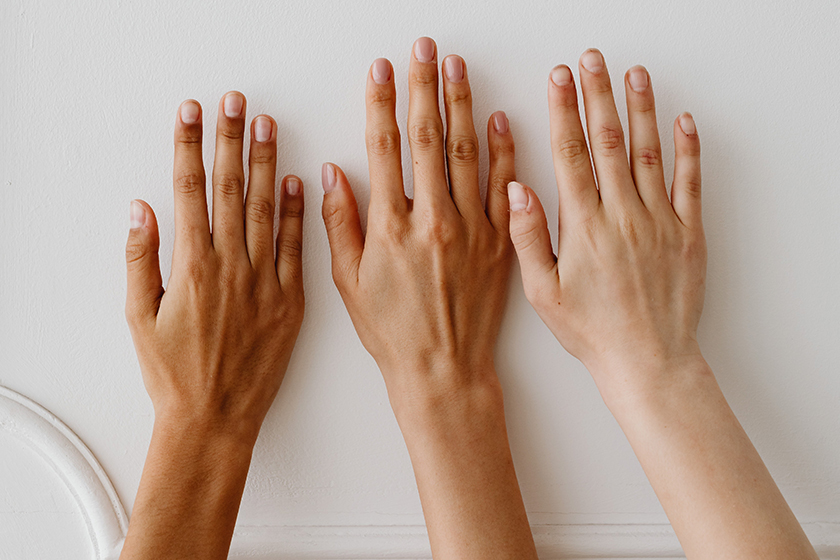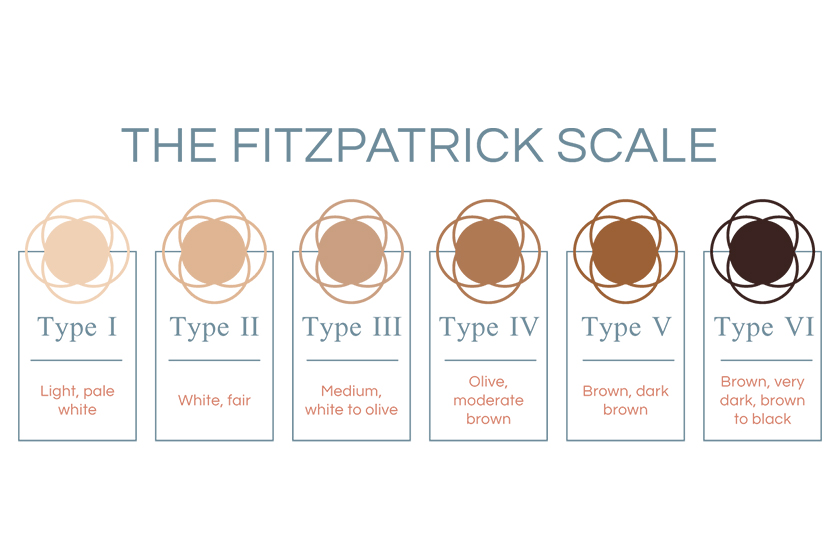We’ve all been there, standing in front of the makeup aisle, swatching foundation shades on our jawline, from the orangey tones to the ashy ones, trying it all in hopes of finding the perfect match.
What if we tell you that the secret to finding your perfect shade lies in finding your tone and, more importantly, your skin undertone. It certainly works better than trying on multiple shades in hopes of landing on the right one by fluke.
And so, in learning from our mistakes and wanting to spare you all that headache and heartache (because buying an expensive foundation that does not match is heartbreaking after all), we’ve come up with a comprehensive guide to help you find your skin tone and undertone. This guide will take you through different skin tones and undertones to help you land that perfect foundation shade.

Find Your Skin Tone and Skin Undertone
Skin Tone
Skin tone is the overall surface colour you see at a glance, which comes down to the amount of melanin present in the skin. It varies, from the palest hues to the darkest browns, resulting from our genetic makeup and sun exposure.
Types of skin tones
- Fair tone is at the lightest end of the spectrum and is characterised by a light, porcelain-like appearance due to extremely low levels of melanin. While this type of skin doesn’t tan, it is highly vulnerable to sunburn, even with short bouts of sun exposure.
- Light tone is balanced and neutral in appearance due to lower melanin levels. People with this skin tone are prone to sunburn, as well as mild sun tan.
- Medium tone is characterised by a rich, warm appearance that is caused due to intermediate amounts of melanin. People with medium skin tones are less prone to sunburn and instead tan more easily.
- Dark tone is at the other end of the spectrum and is characterised by its rich, deep appearance due to higher amounts of melanin. People with darker skin tones rarely burn but tan very easily when exposed to more prolonged sun exposure.
Determining one’s tone is essential in finding the right skincare and face makeup and understanding how to protect the skin from sun damage. Some of the ways to determine skin tone are mentioned below.
- Colour Analysis: Compare your skin to a colour swatch or a standardised chart of skin tones, such as the Fitzpatrick scale, to help you identify whether your tone is fair, light, medium or dark.

- Natural Light Test: Examine your skin in natural light, such as sunlight or soft daylight, to see the actual colour of your skin without any artificial lighting or makeup.

- Sun Exposure Test: Observe how your skin reacts to sun exposure. If your skin burns easily and doesn’t tan, you have a fair skin tone. If your skin burns as well as tans a little, you have a light tone. If your skin tans easily but rarely burns, you have a medium tone. Finally, if your skin never burns but tans during prolonged exposure, you have a dark skin tone.

Skin Undertones

When it comes to our skin, we often tend to focus solely on our skin tone without realising that there is another aspect to consider – our skin’s undertone.
Skin undertones are the colours that lie beneath the visible surface of our skin and give our skin its unique character and depth. Unlike surface colour, which can change with a tan or certain brightening or tan removal cream, this subtle, muted colour beneath the skin’s surface typically remains unchanged.
Types of skin undertones:
Cool – characterised by pink, red, or blue hues.
Warm – characterised by yellow, peach, or gold hues.
Neutral – a balance of cool and warm undertones.
It’s worth noting that most people have a dominant undertone with some secondary undertones. It is also possible for an individual to have different undertones in different areas of their face.
Determining your undertone requires a little more work than your skin tone, but several accurate methods are available to help you find the correct one. Our recommendation? Try 2-3 and use the average of your results to confirm your undertone.
- The Vein Test: Look at the veins on the inside of your wrist. If they appear blue or purple, your undertone is cool. If they appear green, your undertone is warm. If they appear blue-green, your undertone is neutral.

- The Jewellery Test: Silver and platinum jewellery look better on cool undertones, while gold jewellery looks better on warm undertones. And if you can pull off both effortlessly, you are a true neutral.

- White Paper Test: Hold a bright white paper against your bare face. If your skin looks yellowish against the sheet, you’re warm-toned. Are you looking pink? Then you are cool-toned. If you look more green or grey, you could be neutral-toned.

- The Sun Exposure Test: Spending time in the sun is a good way of revealing one’s undertone. If you tend to tan easily and rarely burn, you have a warm tone. If you burn very easily and tan minimally, you are cool-toned. If you both tan and burn, you have a neutral tone.

So bring out the jewellery and step into the sunshine to show your true colours, because as Cyndi Lauper famously said (make that sang)
So don’t be afraid to let them show
Your true colours are beautiful
Like a rainbow.
FAQs
1. What is the most common skin tone?
It varies according to race, ethnicity and geographical location. No one skin tone is common to all. We must also remember that each skin tone has variations ranging from light to dark within the same race, ethnicity and geographical location.
2. How to improve skin tone?
Maintaining a healthy diet, drinking sufficient water and getting enough sleep and exercise are essential to having even-toned skin. You can also get more even-toned and an illuminated complexion by using a dedicated cleanser, face toners, and best moisturizer in you routine according to your skin type. Also, don’t skip sunscreen, summer or winter.
3. What is the difference between skin tone and undertone?
Skin tone is the overall surface colour you see at a glance. In comparison, undertone is the subtle, muted colour beneath your skin.
4. Which shade is preferred for which skin tone?
Different colour shades in makeup complement different skin tones. While this may be subject to one’s own style, the general preferences are-
- Pastels look good on fair skin tones.
- Light browns, corals and pinks compliment light skin tones.
- Medium skin tones are enhanced by red, brown and gold earthy colours.
- Dark skin tones are complemented by deep colours like berry, dark brown and deep maroons.
5. How to know your skin tone for foundation?
While choosing a foundation, knowing your skin tone and undertone is essential.
Using the methods mentioned in the article, such as sun exposure, vein test, etc., you can determine your skin tone and undertone, knowing that you can choose the right foundation shade.
6. What is Indian skin tone chart?
The Indian skin tone chart is a 16-point scale that classifies Indian skin tones based on their lightness, darkness, and hue. It was developed by the All India Institute of Medical Sciences (AIIMS) in 2012.
References:
https://global.kryolan.com/blog/posts/skin-tones
https://innovist.com/blogs/news/skin-care-products-as-per-skin-complexion-types
https://mineralair.com/blogs/news/how-to-determine-your-skin-tone-and-undertone
https://www.elle.com/beauty/a32493187/skin-undertone-guide/













